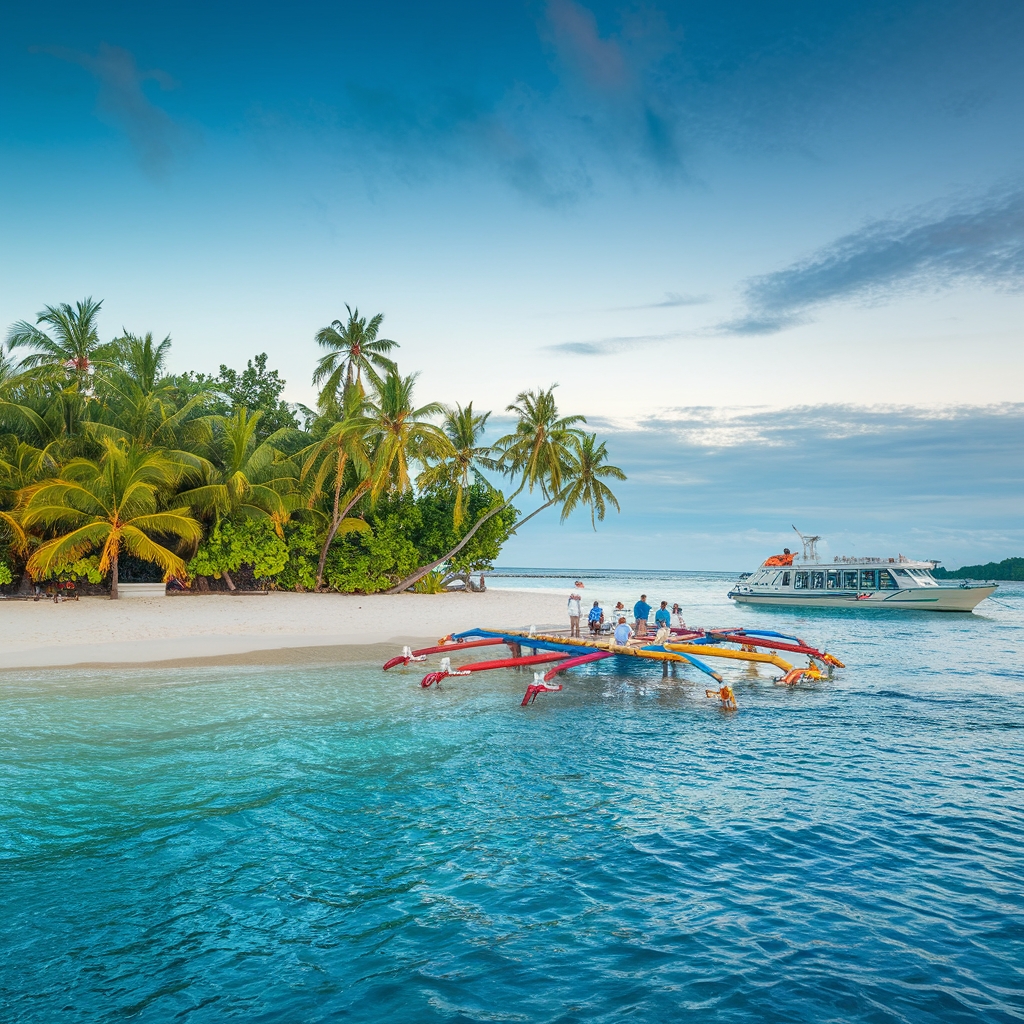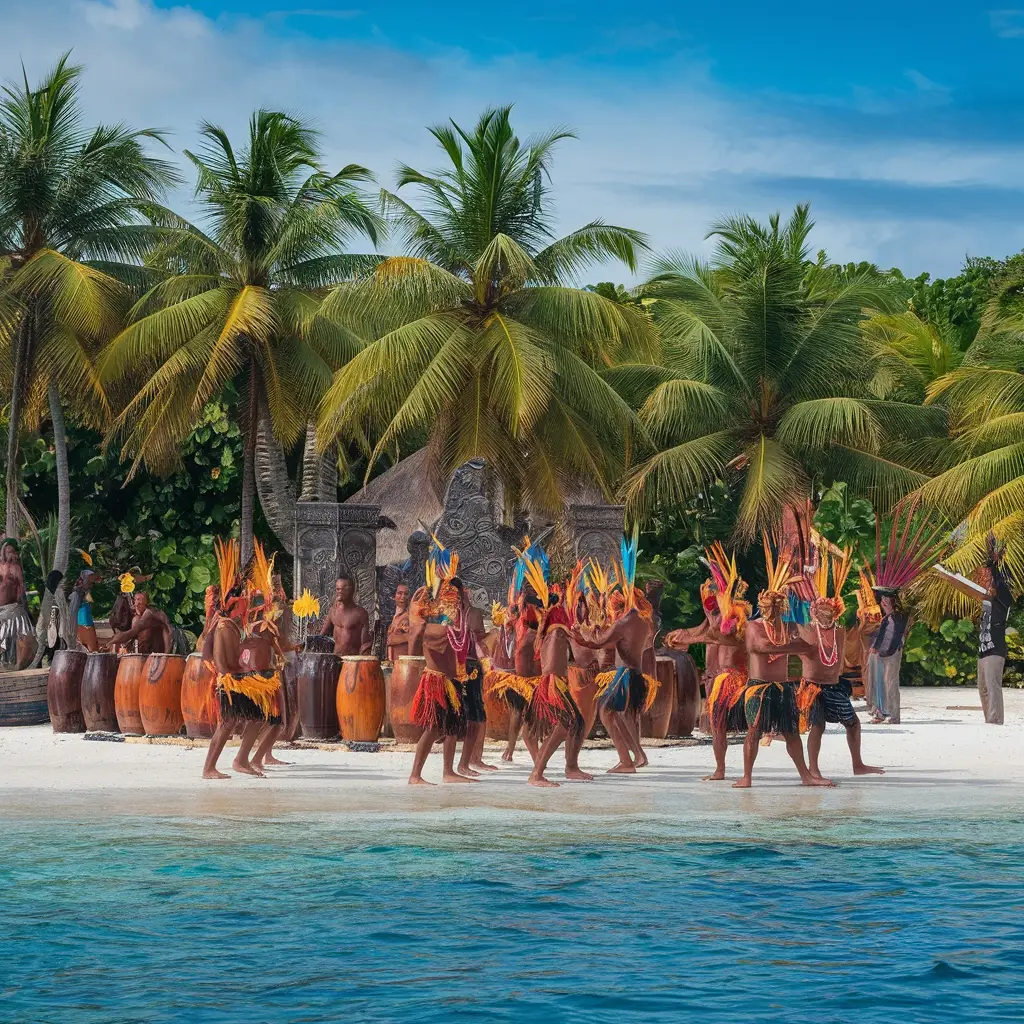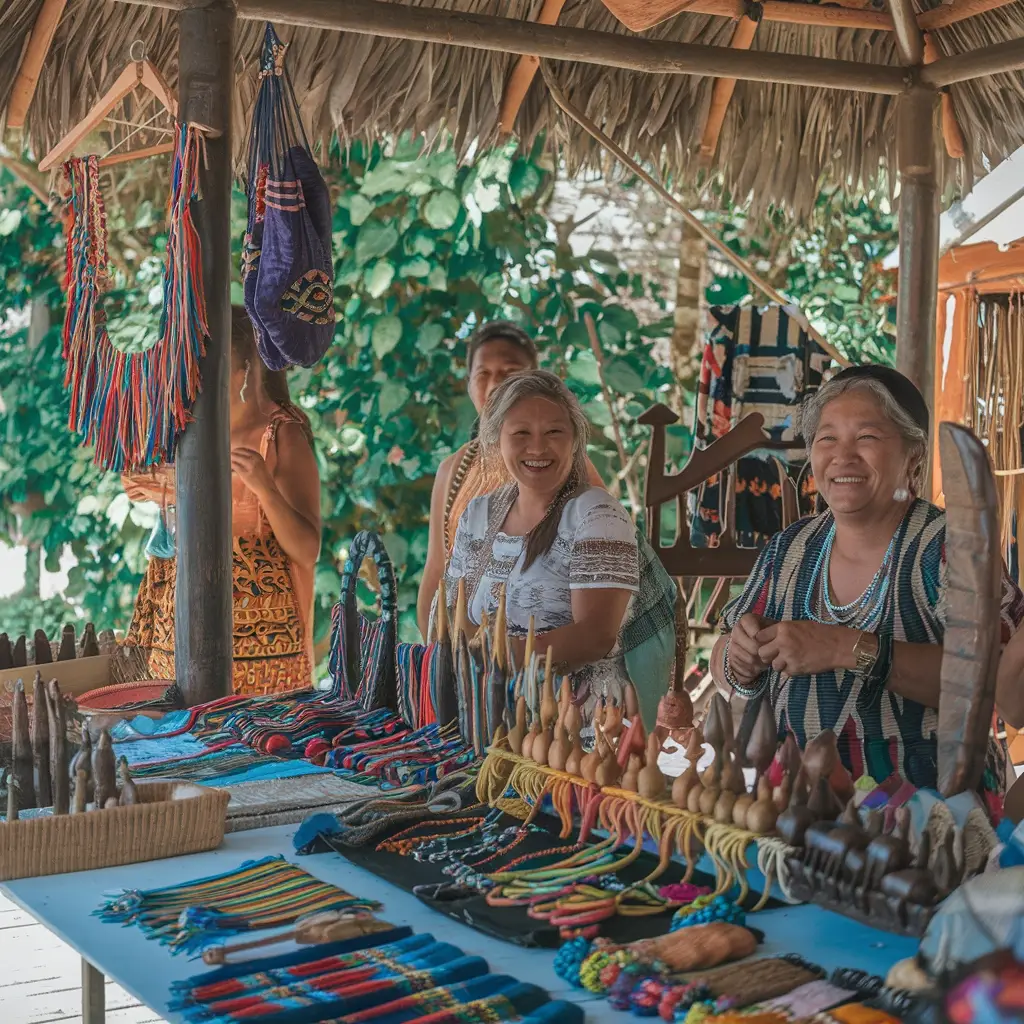Cruise ships drop anchor off Kiriwina Island, and you’ll hop on tenders to reach Kaibola Beach.
For other Papua New Guinea Cruise destinations check out our Papua New Guinea Cruise Ports Guide page.
Make sure to bring Kina cash since there aren’t any ATMs around and nobody takes credit cards.
Pack reef shoes too – that coral can be super sharp!
Once ashore, you’ll catch some amazing traditional dance performances, snorkel through colorful reefs, and browse wooden carvings (they go for about 5-100 Kina).
Just remember to ask before snapping photos of locals and dress modestly to show respect.
This guide covers all the essentials for an awesome Trobriand Islands adventure.
Map of Kiriwina Island (Trobriand Islands) Cruise Ship Port
Arrival & Beach Landing Procedures

Approaching Kiriwina Island, the cruise ships drop anchor about 1-2 km offshore – this keeps our big boats from damaging the gorgeous coral reefs that hug the island. You’ll hop onto tenders (basically the ship’s lifeboats) for a breezy 15-20 minute ride over to Kaibola Beach.
The tenders run from 7 AM to 5 PM only – trust me, you don’t want to navigate these reef-filled waters after dark! Don’t forget to swipe your ID card before boarding – the crew keeps tabs on who’s where.
When you reach the island, you’ll step off onto an old coral causeway that dates back to World War II. Pro tip: pack some reef shoes – the shoreline’s scattered with sharp bits of coral that’ll tear up your feet if you’re not careful.
Essential Visitor Information & Local Currency
Money Tips for Kiriwina
Four things you need to know about cash on Kiriwina: they use Kina, there’s not a single ATM anywhere, forget about using your credit cards, and bring lots of small bills.
Get your Kina before leaving the ship (about 2 Kina for every Aussie dollar). The locals often can’t exchange foreign money, so having extra Kina helps them out too. Sometimes vendors might take AUD or USD, but they’ll probably ask you to change it for them later.
Shopping-wise, you’ll mostly find wood carvings at the markets. Small stuff goes for 5-50 Kina, while bigger pieces run 30-100 Kina. Don’t try haggling here – prices are set and pretty fair anyway.
Cultural Experiences & Traditional Performances

When you land on Kiriwina’s beaches, you’re instantly surrounded by one of Melanesia’s most lively cultures still thriving today. Cruise ships often get welcomed with village dances featuring traditional outfits and rhythmic moves.
Make sure you catch the Wosi Mwaya circle dances or cricket shows—these cool events mix sports with old battle traditions. Want to see more? Join a village tour (costs 20 PGK) where you’ll check out yam houses, burial caves, and watch local woodcarvers at work.
Just remember—always ask before taking photos of performers or sacred places. And dress respectfully (cover those shoulders and keep bottoms knee-length) to show respect for local traditions.
Top Natural Attractions & Activities
Paradise awaits beyond Kiriwina’s cultural treasures with natural wonders that blow any South Pacific destination out of the water. Just steps from shore at Kaibola Beach, you’ll discover vibrant coral reefs bursting with colorful fish and sea turtles swimming about.
Want to see the best marine life? Head to the rocky stacks left of the jetty. Good swimmers can reach these spots on their own, or grab a local canoe if you’re looking for an easier ride.
While you’re there, check out the sunken WWII plane wreck visible underwater, or venture into the mysterious Kalopa Cave system. For the best experience, visit during dry season (April-October) when the water’s calm and clear – perfect for all your underwater adventures.
See what’s on offer from the Port of Rabaul for a different Papua New Guinea Cruise destination.
Shopping & Local Crafts

Shopping & Local Crafts
Don’t miss Kiriwina’s bustling marketplace where you’ll find five must-have handicrafts. Local artists spread their wares on beach mats – everything from stunning ebony carvings of ancestral spirits to handwoven baskets and gorgeous shell jewelry that tells the island’s story.
Bring cash in Kina (PGK) since there are no ATMs around. Set aside about 100-200 PGK if you want to take home something special and support island families directly.
Shopping tips while you’re here:
- Buy straight from the makers to get the real deal
- Don’t haggle – prices are fixed to make sure artists get paid fairly
- If you can, pack some school supplies as little gifts too
Just remember to check if your plant or animal souvenirs need declaring when you head home.
Health, Safety & Environmental Considerations
While buying souvenirs will give you great memories to take home, keeping yourself healthy and looking after Kiriwina’s fragile environment makes sure your visit is a good one for everyone.
If you cut yourself on coral, get it cleaned straight away at the medical tents, and wear reef shoes to avoid getting hurt in the first place. Bring your own water bottles instead of buying plastic ones, and make sure your sunscreen won’t harm the reef. Listen carefully to the crew during boat transfers – they know what they’re doing.
Stick to the main areas and don’t wander off alone on unknown paths without a guide. Carry small Kina notes for purchases and keep expensive stuff out of sight.
Be good to the ocean – don’t touch coral and please don’t buy shells as souvenirs. For serious medical problems, remember you’ll need to be taken to mainland PNG – so travel insurance is a must. Always ask before taking photos of locals or entering their sacred places.
Frequently Asked Questions
What Creatures Should I Watch for in Shallow Water?
Keep an eye out for stonefish and sea urchins when wading in shallow water. These guys are sneaky and like to hang around coral, sometimes totally camouflaged. Definitely grab some reef shoes to protect your feet. On the bright side, you might spot some gorgeous tropical fish darting around, and those weird-looking sea cucumbers that are actually pretty harmless.
Are Ceremonial Gift Exchanges With Locals Appropriate for Visitors?
Thinking about joining in on those gift exchanges? It’s actually not the right move for tourists. Sacred Kula traditions aren’t really open for visitor participation – but don’t worry! You’ll still feel connected by watching respectfully from the sidelines. Instead of trying to join ceremonies, show your appreciation by picking up some beautiful handmade souvenirs from local craftspeople.
How Do Matrilineal Customs Affect Interactions With Village Children?
You’ll see kids around here pay more attention when their mom’s brother tells them what to do – not so much their dad. Just go with this flow and don’t step on any toes when local adults are handling things. If you want to bring something for the children, stick to little treats like shells or trinkets. Don’t bring stuff they actually need – that’s what the uncle is supposed to provide in their culture.
Can I Arrange Overnight Stays With Local Families?
Absolutely! You can set up homestays through the local guides or spots like Manuel’s guesthouse. Just remember to bring some Kina (local currency) with you and sort out the details ahead of time – these authentic experiences aren’t listed on your typical booking websites.
What Significance Do Yams Have in Local Social Hierarchy?
Yams aren’t just something you eat around here – they’re basically social currency. The more yams you’ve got, the higher up the ladder you are. Local chiefs get their clout by stockpiling these things, then showing off by throwing big feasts or handing them out as gifts. It’s pretty much how everyone knows who’s who in the pecking order.
Thinking about something different? Check out the cruises leaving from Conflict Islands Cruise Ship Port.
